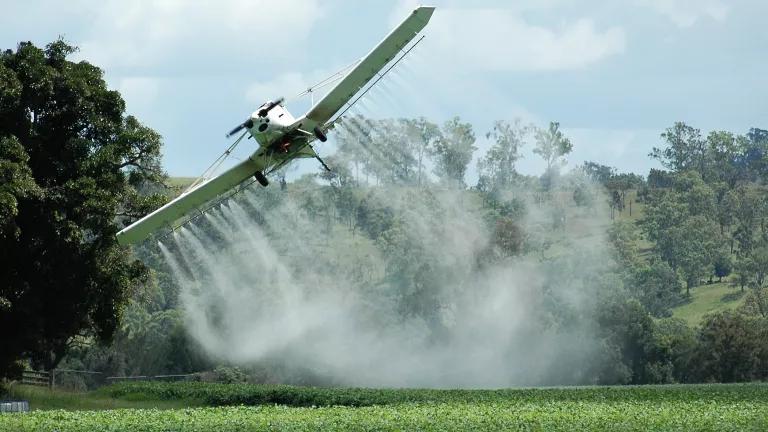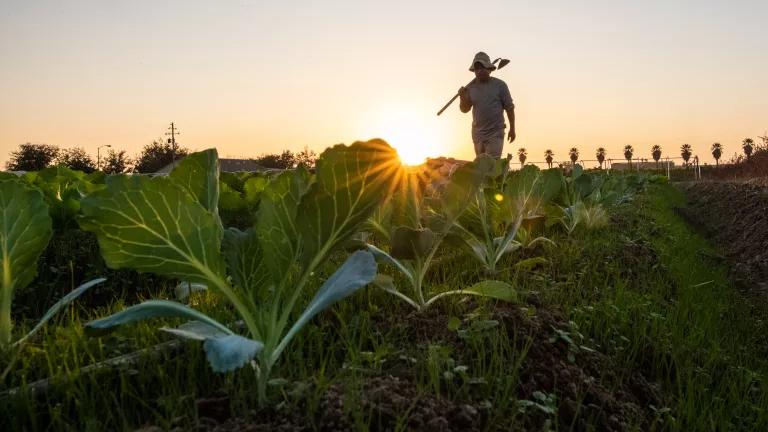Where & How We Grow Organic Matters – Get Involved!
To maximize the power and positive impacts of these investments and make organic more widely accessible, USDA must take a holistic, multi-benefit approach to problem solving and connect the dots between growing organic and regional food system investments.

Pollinators and people alike benefit from growing organic.
The October 2022 National Organic Standards Board (NOSB) meeting – the first in-person since 2019 – spurred waves of emotion, introspection, and inspiration. Reuniting in community created space to celebrate organic’s many successes – including our Chair’s opening reflections on how the organic movement helped him thrive as a gay farmer/rancher in Montana. We also grappled with the heavy weight of the climate, plastic, and PFAS crises looming before us and how organic could do even more to offer solutions.
As a new member of the NOSB, I’m grateful to hear from people across the country who work to make our food system environmentally and economically sustainable. And one message continues to come through loud and clear: we need more creative and synergistic approaches to expanding organic that will transform our food system to meet the challenges ahead.
Our federal organic standards offer a unique mechanism for weighing in on what “Organic” means: the 15-member NOSB advises the U.S. Department of Agriculture (USDA) on a wide range of issues in organic agriculture, to ensure that organic remains a rigorous, clearly defined label that producers and consumers value. The NOSB supports growth of the organic sector by promoting consumer trust – from recommending stronger standards for organic livestock and poultry to continuously scrutinizing materials allowed in organic production. But we also need stakeholders working with USDA and Congress to ensure that our public policies and investments in organic agriculture are commensurate with organic’s significant climate, health, and economic benefits.
USDA’s new $300 million Organic Transition Initiative provides a unique opportunity to test collaborative strategies for growing organic and direct current and future investments to areas of greatest need. The Initiative has three arms: a “Transition to Organic Partnership Program” (TOPP) that will deliver wraparound technical assistance in six regions of the country; improved access to conservation and risk management tools for organic and transitioning producers; and market development to ensure that as organic supply expands, so does demand.

Organizations participating in the Transition to Organic Partnership Program as of October 2022 (the logo closest to each region name is the regional lead).
Now is a critical moment to shape the partnerships and market development elements of USDA’s Organic Transition Initiative:
- Partnerships: The National Organic Program (NOP) needs input on partners to include in the Transition to Organic Partnership Program (TOPP), to ensure that the program serves Black, Indigenous, and people of color (BIPOC) producers and reaches regions with fewer existing resources to support organic. Anyone can offer suggestions or get involved by filling out this form or contacting NOP Deputy Administrator Jennifer Tucker. The TOPP regional leads – the largest nonprofit organic certifier in each region (see map above) – will also play important roles in advancing strong representation and engagement.
- Market development: USDA will host a listening session on November 15, 3 to 4 ET, to gather ideas about how organic infrastructure investments could support increased access to processing, storage, distribution, and consumer markets. Written comments may also be submitted to NOP Quality Manager Rebecca Claypool. The Organic Transition Initiative’s investments in market development will help grow markets alongside supply and ensure organic remains a strong economic driver for farming communities.
In addition, USDA has current and upcoming funding opportunities for Regional Food Business Centers, meat and poultry processing infrastructure, land access, and climate-smart commodities, among others.
To maximize the power and positive impacts of these investments and make organic more widely accessible, USDA must take a holistic, multi-benefit approach to problem solving and connect the dots between growing organic and regional food system investments. USDA should keep the following questions in mind as it shapes the Organic Transition Initiative and other related programs:
- What types of processing and storage infrastructure will help farmers and ranchers achieve a sustainable income and make organic food affordable and accessible to more consumers?
- What investments in publicly available seeds and breeds will create new organic market opportunities and help organic producers succeed in a changing climate?
- How can these programs help grain producers who need local markets for the alfalfa in their crop rotations connect with farmers and ranchers who need access to grazing land?
- How can USDA deliver organic milk and other organic foods to school children and help the struggling organic dairy sector at the same time?
- What does the organic sector have to offer the plant-based foods movement? Crop rotation burgers anyone?
It’s time to unlock the potential of organic agriculture for climate, health, and economies – and ensure that USDA’s investments in market opportunities and regional support drive us in the right direction.




